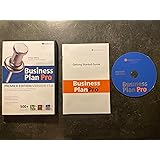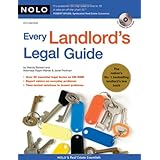Are you navigating the complexities of the real estate market, wondering how to invest and succeed without falling victim to common pitfalls? The insights shared by Robert Kiyosaki, Kim Kiyosaki, and Grant Cardone in the accompanying video offer invaluable perspectives on establishing sound real estate rules for beginners and seasoned investors alike.
Their discussion dives deep into current market dynamics, contrasting investment philosophies, and the essential considerations for anyone looking to build wealth through property. This article expands upon their expert advice, providing a comprehensive guide to understanding these critical real estate concepts.
Understanding Today’s Dynamic Real Estate Market
The real estate landscape is currently undergoing unprecedented shifts, driven by economic forces and changing demographics. Grant Cardone highlights a “super cycle” in motion, asserting that real estate values have not kept pace with the substantial $3 to $4 trillion dollars that have been printed in recent times. He suggests that we are far from bubble territory, with property values still having considerable room for appreciation.
Moreover, the demographics of today’s buyers are significantly different from those seen in 2010. Affluent individuals are acquiring second and third homes, frequently paying cash or making substantial down payments of 50% or more. This influx of investor-buyers, often lining up 25 offers on a single-family home in areas like Scottsdale, is pushing prices beyond asking, often with the intention of converting properties into short-term rentals like Airbnb.
Geographic Shifts and Political Influence on Property Value
A significant trend influencing real estate is the substantial migration of people and capital across the United States. Robert Kiyosaki and Grant Cardone discuss the movement away from cities and states perceived as having “crazy politics” or high levels of mandates, such as San Francisco, New York, Illinois, New Jersey, California, Portland, and Seattle.
These populations and investments are relocating to more business-friendly and fiscally conservative regions. Consequently, states like Arizona, Utah, Nevada, Florida, the Carolinas, and Texas are experiencing explosive growth and demand in their real estate markets. Even unexpected areas, such as Portland, Oregon, have seen soaring property values internally, despite the outward migration of some residents, as local buyers “move up” within the market.
Leveraging Other People’s Money (OPM) in Real Estate
A cornerstone of strategic real estate investing, as emphasized by the Kiyosakis, involves utilizing Other People’s Money (OPM) rather than solely relying on one’s own capital. Robert Kiyosaki provocatively states that the very reason to buy real estate is to use OPM, highlighting that plenty of financing options are available for shrewd investors.
Grant Cardone initially funded his first 4,000 to 5,000 multi-family units using profits from his other businesses, avoiding borrowed funds from family or traditional public sources due to the personal risk. He later expanded to public capital raising, driven by his wife’s suggestion to allow his followers to invest alongside him. This approach successfully raised $6 million for a deal in just 60 minutes, showcasing the power of his platform.
Accredited vs. Non-Accredited Investment Strategies
Grant Cardone’s innovative capital-raising model bypasses traditional intermediaries like Merrill Lynch or Fidelity, directly connecting with both accredited and non-accredited investors through platforms like Instagram and Facebook. He offers opportunities in large-scale properties, often valued between $80 million and $230 million, which are typically only accessible to institutional investors like Blackstone or Goldman Sachs.
This method democratizes access to “Blackstone quality” deals, allowing individuals to invest as little as $1,000. However, Robert Kiyosaki underscores the importance of due diligence, even when investing with reputable figures like Grant Cardone. Understanding who is considered an accredited investor (someone meeting specific income or net worth thresholds) versus a non-accredited investor is crucial for navigating these investment opportunities responsibly.
The Critical Role of Property Management
While raising capital can be relatively straightforward, especially in today’s market, both Robert and Kim Kiyosaki stress that property management represents the truly challenging aspect of real estate investing. They emphasize that while getting money is easy, competently managing a property to ensure long-term profitability and asset protection is where many investors falter.
Kim Kiyosaki recounted her experiences, from dealing with late-night tenant issues and evictions to the rigorous demands of managing multiple units. This hands-on experience, though demanding, provided invaluable legal and operational knowledge. Her personal story of being reprimanded by a judge for delaying an eviction underscores the necessity of strictly enforcing lease agreements and understanding local landlord-tenant laws.
Scaling Property Management: From Self-Management to Professional Oversight
The Kiyosakis acknowledge that self-managing properties, while providing profound learning experiences, consumes an immense amount of time and energy. This limitation can prevent investors from scaling their portfolios. They eventually partnered with Ken McElroy, who manages properties of 150 units or more. This strategic partnership allowed the Kiyosakis to significantly expand their portfolio to approximately 10,000 units, focusing on acquisitions and financing rather than day-to-day operations.
Their approach highlights that while starting small and learning the ropes of management is beneficial, delegating management to experienced professionals becomes essential for larger-scale growth. This shift enables investors to move from being active “toilet fixers” to strategic asset managers, overseeing the managers themselves.
Diverse Approaches to Real Estate Investment
The discussion reveals two distinct, yet valid, philosophies for engaging in real estate investment. Robert and Kim Kiyosaki advocate for starting small, gaining hands-on experience, and learning property management first. Their journey began with a two-bedroom house, where Kim personally handled management duties, gaining crucial education through direct experience.
Conversely, Grant Cardone advises that individuals might be better off partnering on larger deals rather than acquiring single units, especially given current market competitiveness. He argues that a single unit leads to 100% vacancy when a tenant moves out, creating immediate financial pressure. While he started with a single unit, he now champions the concept of fractional ownership in large multi-family assets, bypassing the complexities of individual property management for smaller investors.
Investing in Big Deals vs. Learning the Ropes
Grant Cardone emphasizes that in a highly competitive market, obtaining smaller deals often comes with a premium price, making larger assets more economically viable for experienced investors. He often competes with institutional giants for deals, using his ability to move quickly with substantial earnest money to secure properties. This strategy is not typically accessible to beginners who lack significant capital or established relationships.
The Kiyosakis’ journey, eventually leading to partnerships for large-scale management, illustrates a path where initial hands-on learning culminates in leveraging expert management. They use debt from these large properties to strategically offset taxes, a sophisticated move discussed in books like Tom Wheelwright’s “Tax-Free Wealth.” This advanced financial engineering is a powerful benefit of large-scale real estate investing.
The Importance of Due Diligence and Continued Learning
Regardless of the chosen investment path – whether starting small and managing, partnering on larger deals, or passively investing with experts – robust due diligence is paramount. Robert Kiyosaki warns against buying a “Titanic” property that could lead to financial ruin, emphasizing that real estate is a “very different game” compared to stocks or mutual funds, where an investor truly “owns” their mistakes.
Kim Kiyosaki consistently highlights the importance of staying informed about market trends, job markets, and demographic shifts. Learning the legal nuances, understanding cash flow, and carefully assessing liquidity—the ability to exit an investment quickly if needed—are all vital components of successful real estate investing. Books like Ken McElroy’s “The ABC’s of Real Estate Investing” and “Property Management” are recommended resources for building foundational knowledge.
Ultimately, navigating the real estate market effectively, particularly as a beginner, requires a commitment to continuous learning and a clear understanding of your chosen strategy. By considering these essential real estate rules for beginners and embracing a well-informed approach, you can strategically position yourself for long-term financial success.









